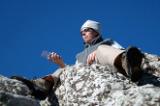Why Set Priorities?
Why Set Priorities?
Conservation planning is a relatively new subdiscipline of conservation biology. Its purpose is to use the best available data, concepts, and techniques to determine how and where to protect biodiversity, open space, historical places and structures, or other valuable features. Conservation planning fundamentally sets priorities and weighs the costs and benefits of alternative conservation actions.
Not every acre of open space can be protected. Whether there is little remaining undeveloped land or a bewildering number of potential conservation options, land parcels often vary widely in cost as well as quality. Practitioners must make difficult choices in order to “get the most bang for the buck.” Should we buy a series of small, high-quality, but very expensive parcels or one big parcel of lower quality that can be purchased and managed more cost-effectively? There is no simple or universal answer to this question.
Many kinds of organizations, agencies, corporations, and individuals identify and designate lands and waters for conservation purposes. The myriad reasons for setting aside or designating special areas (none of which are mutually exclusive) include:
- Protect open space and rural land uses. Lands are often recognized for their scenic or cultural values and are set aside to limit urban sprawl, maintain traditional ranching or farming lifestyles, provide recreational opportunities and scenic viewsheds, and enhance property values across the landscape.
- Provide recreational opportunities. Lands may be established as parks or wildlife areas or in greenways and trails systems to provide recreational opportunities ranging from organized sports to hunting, fishing, dispersed hiking, equestrian, nature study, and other uses.
- Protect and maintain ecosystem services. Lands may be set aside specifically or implicitly to provide services to the human community, such as watershed or wetland protection, provision of clean drinking water, reduction of flood potential, or protection of wildlands in agricultural areas to provide a source of pollinators for crops.
- Maintain biodiversity and ecosystem integrity. Lands may be set aside specifically to protect rare and imperiled species, natural communities, and other natural features and to maintain the integrity of ecosystems by ensuring the continued operation of ecological processes.
- Practice conservation development. Lands may be set aside for conservation as part of development projects (e.g., master planned communities, cluster developments, conservation buyer projects) to mitigate the impacts of development and to achieve any of the goals reviewed above, including enhancement of property values, provision of recreational opportunities and ecosystem services, or protection of particular natural features.
Conservation planning attempts to make land protection decisions objectively through an ongoing, iterative process of:
- identifying land-use threats and opportunities
- setting goals and measurable objectives for conservation
- gathering and analyzing map-based data (usually now in geographic information system [GIS] format) relevant to the planning goals
- developing and comparing alternative future scenarios for the region of interest, and
- coming up with a proposed solution – for example, a reserve design, open space plan, or a series of options for future land use.
Although conservation planning often has been carried out in the sheltered offices and labs of university scientists, conservation organizations, or government agencies, today more and more conservation planners have recognized the need for local grassroots involvement in planning. Indeed, only through such involvement do plans have much chance of being implemented.
Reed Noss, the Davis-Shine Professor of Conservation Biology at the University of Central Florida, has been one of the lead voices in conservation biology for nearly three decades. He has served as President of the Society for Conservation Biology, Editor-in-Chief of its journal, Conservation Biology, and was a co-founder of the Wildlands Project.
Go Straight to Your State
Learn about conservation and open space in your state.


